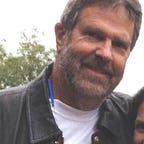Transit Tunnels and Hyperloops-Transformational, Tunnel-Vision, Hype, Loopy, or None of the Above?
Elon Musk, that clever and rascally entrepreneur, proposed a bid in 2018 for the O’Hare Express Tunnel on behalf of his “The Boring Company”. He promised that he could move travelers from the O’Hare Airport in Chicago to the downtown loop at over 100 mph, for less than $1 billion (and no taxpayer money), using electric sled pods. Many believe that Musk was “lowballing” this project (bidding at below his cost hoping to make up the money later in changes), with some also hoping for the high-flying Musk to fail in some fashion. Nevertheless, it would seem that Musk is on the right track, as these “Hyperloop” systems have great potential for certain types of travel. These trips may perhaps be more expensive “milk-runs” for the moment (highly traveled and pricey routes, such as airport to downtown or LA to Vegas type trips), but may someday be of the LA to New York variety. Limitations may include the costs of current tunneling technology and the relatively small payload of the “sleds”, which drive up cost. Considering the potential high-speeds, people may be willing to pay these high costs and certainly Musk and others are willing to use their money to find out.
The Hyperloop was generally conceived to be a high-speed, nearly frictionless type of train that runs through underground tunnels or tubes which are in at least a partial vacuum. Variations on this concept are Mag-lev trains that run on a magnetic cushion between rail car and track. Speeds of nearly 800 mph have been proposed on a system conceived by Musk between SF and LA, roughly following the I-5 Freeway. The idea of evacuated tube travel has been around for awhile. In the 19th and 20th centuries, various “Atmospheric Railways” were proposed to move vehicles pneumatically (by air) through large tubes, but none were built commercially. In college physics classes, many remember the concept of a “train” running through a frictionless arc drilled into the Earth’s crust between New York and London, being accelerated and decelerated by the Earth’s gravity (we had to figure out its speed…a fun problem).
The cost of tunneling technology is a major hurdle, as currently a jurisdiction is lucky to build one for less than $400 million per mile (using recent projects as a bench mark). Musk claimed to build his 12’ diameter, 1.5 mile LA test tunnel for $10 million per mile, and estimates from his O’Hare Express bid put tunneling cost estimates at $20-$30 million per mile (his overall bid is for $1 billion, and there are station construction and other costs involved). Although Musk claims to have innovated a method of higher efficiency/lower energy tunneling, some are skeptical. Honestly, it is hard to estimate tunneling costs due to the varieties of unforeseen geologies that can be encountered. Presumably Musk’s SF to LA hyperloop would employ a majority of above-surface tubes (perhaps in the I-5 median?) as that would be the only way to have reasonable cost control using today’s technology. Like the California High Speed Rail, he might be looking at about 50 miles of bored tunnel under the Coast Range and Tehachapi Mountains, albeit at smaller (and cheaper) diameters.
An example of the difficulty of tunneling is the “Bertha” tunnel boring machine used for the Alaskan Way Viaduct replacement tunnel in Seattle (conceived to carry traffic from South to North Seattle, under the downtown region). The project was begun in mid 2013 with a 2 year timeline. After tunneling a little over 1,000 feet, Bertha hit a metal obstruction (or burned out faulty bearings, depending on which version you believe), and had to be recovered via excavation pit. Tunneling resumed in late 2015, but then a damaged pier soon created a sinkhole, which again halted Bertha. Tunneling resumed in mid 2016 and was completed a year later. Bertha was then disassembled and scrapped, and the project was opened to traffic in 2019 (with a $223 million cost overrun). It should be said here that for some projects, tunneling may be the only option (in this case the alternatives were costly, unsightly, and disruptive bridges or excavations), and cost overruns for unexpected conditions are common. However, this also shows that tunneling is a kind of crapshoot.
Potential problems with Musk’s Hyperloop concept are thought to be the possible dangers of travelling at such high speeds (rapid acceleration and deceleration have the potential to harm passengers), the relative infancy, high cost, and risk of Maglev technology, the problem of passengers riding in a dark tunnel, and potential water intrusion. Musk’s company is far from the only one studying this technology, as companies such as the Virgin Interloop One (Involving Richard Branson with a pilot project in India), Hyperloop Transportation Technologies (with pilot projects in Abu Dhabi and China), and TransPod (a Canadian company with pilot projects in Canada and France) are major entries. These and other smaller companies are each using different technologies to achieve similar aims, and various Hyperloop Pod Competitions have been held with prize money offered to those who can achieve the best results.
Critics maintain that Hyperloop systems will always be a pricey option for fewer, richer people, but I suppose that they would be a much cleaner alternative to air travel if/when fully implemented. On the other hand, air travel is getting cleaner and generally doesn’t have to deal with expensive right of ways and tunnelling!
Enjoy these other Vern Scott articles re: the current state of Green Energy!
Also, enjoy these other Transportation-related articles by Vern Scott!
